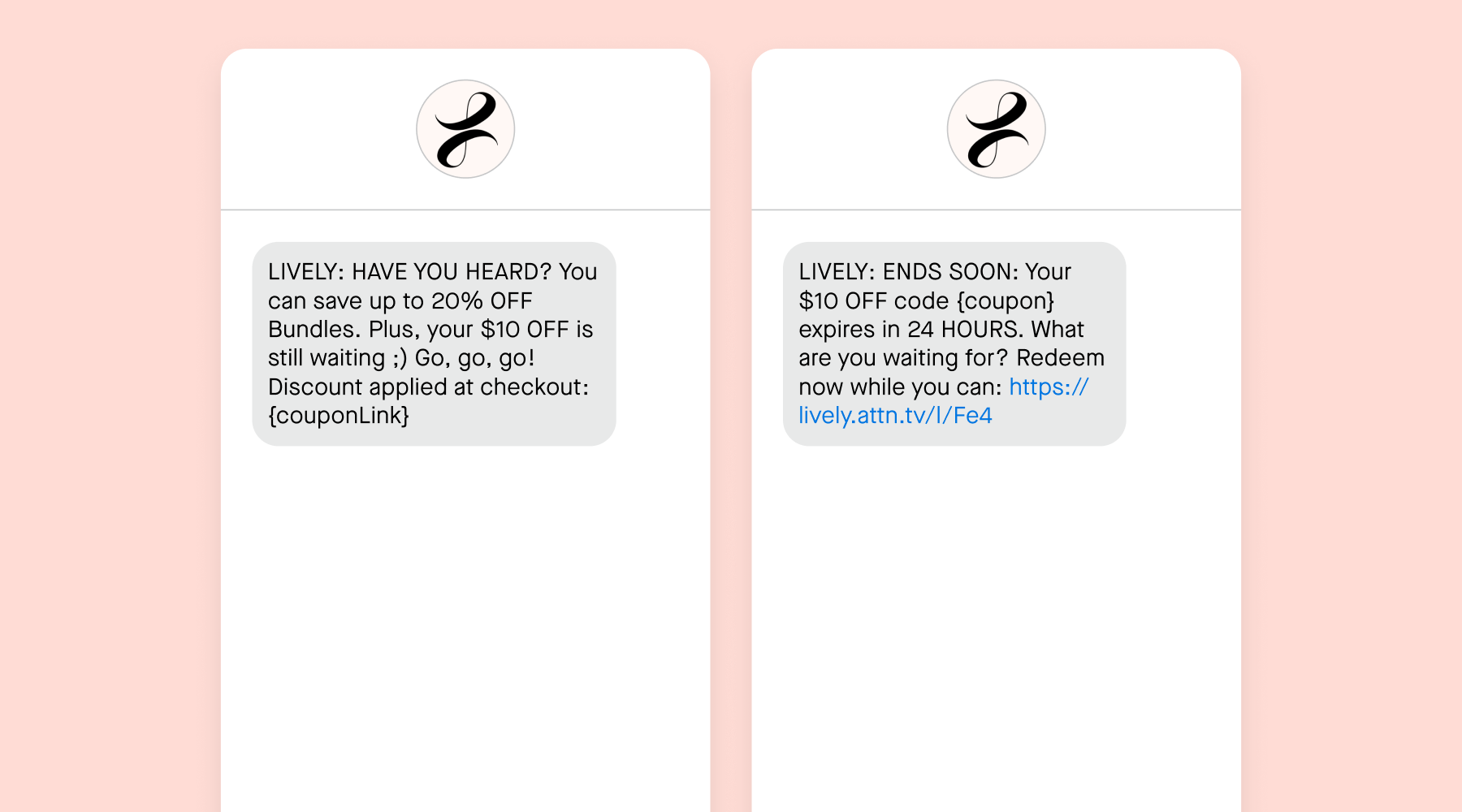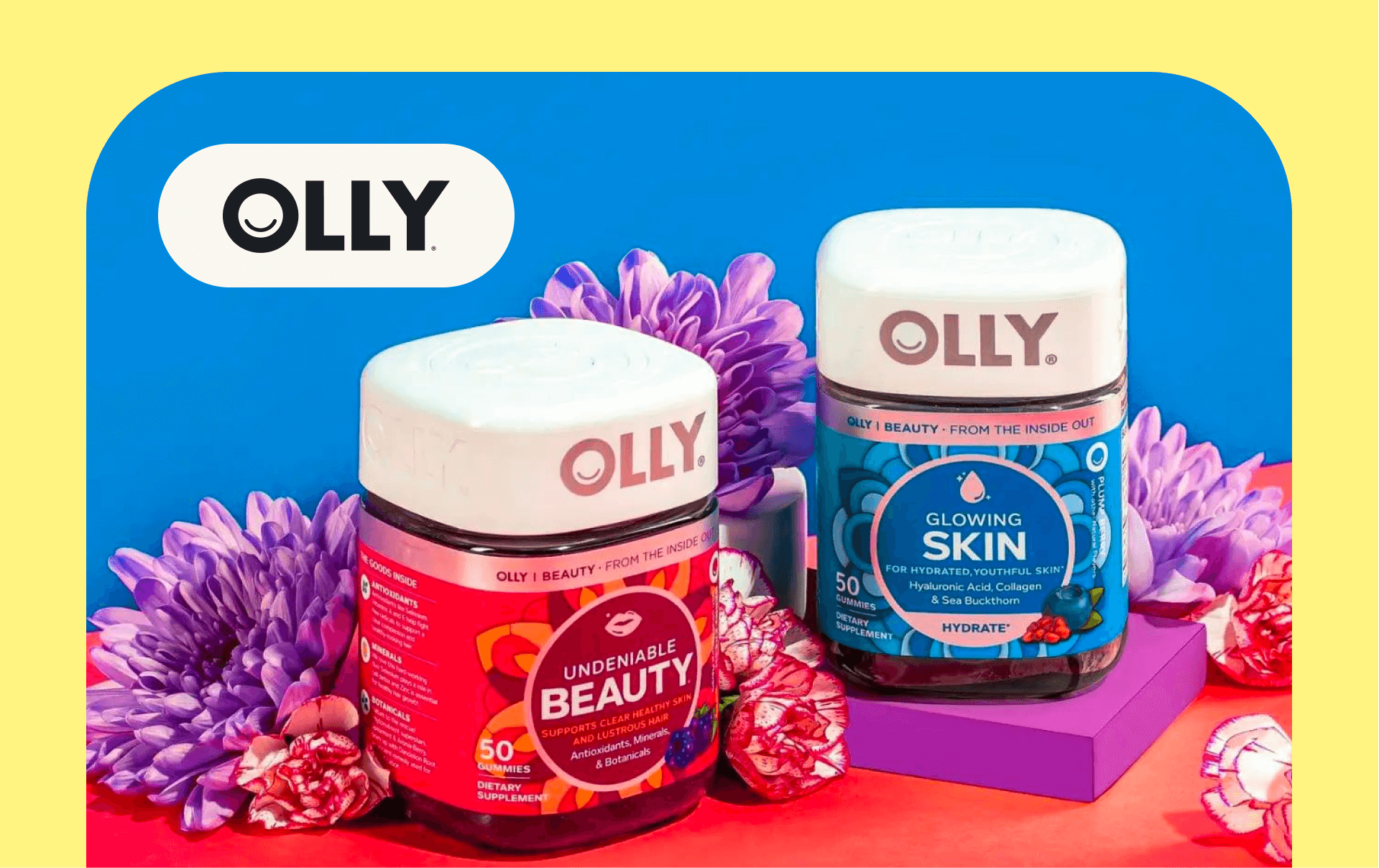Learn how the lifestyle brand’s personalized approach to marketing enhances the customer experience and drives results.
It wasn't long ago that lingerie could only be one thing: comfortable or stylish, but rarely both. LIVELY set out to change that in 2016.
Born on Instagram, the digitally native lifestyle brand and community has shifted the narrative on bras and underwear by putting the needs of the people who wear them first. LIVELY represents a new category of lingerie—or as they like to call it, Leisurée (lingerie plus athleisure) —that blends fashion with function.
The brand also takes a blended approach to marketing, combining their business goals with customer data and insights, to develop an engagement and retention strategy that's anything but one-size-fits-all.
We sat down with Hayley Squire, Senior Manager, Lifecycle Marketing at LIVELY, to talk about how the brand adds a personal touch to every step of the customer journey, creating targeted experiences that drive loyalty and repeat purchases.
How does your approach to marketing reflect the personal nature of LIVELY's brand and products?
Marketing bras and underwear to consumers is certainly not one-size-fits-all. We're constantly trying to combine education, function, and innovation when talking about our products because we know that's what resonates with our audience.
We've learned over the years that our customers need education to move through the purchase funnel. They want to know: Why do I need this no-wire style? Why is this swimsuit fabric better than others? How can I wear the strapless bra as a fashion piece?
Meeting the customer where they are in their individual journey has also been a crucial part of our strategy. Everyone wants something different, so we strive to create unique experiences to help each shopper move higher up the funnel. One way we do this is by using conditional branches and custom segments in all of our triggered SMS journeys, which allows us to both reach our marketing goals and build strong relationships with our customers.
What are some SMS-specific strategies you're using to consistently drive engagement, revenue, and loyalty?
SMS has really taken off for us over the past year. It's become one of our top revenue-driving channels, with attribution shifting from email to SMS.
Our conversion strategy starts with dual capture on our website. We've spent time testing different incentives and offers to see what works best at getting visitors to opt in to SMS. We have a very robust welcome journey that includes seven touch points over a 24-day period. It’s designed to help move new subscribers through the funnel to make their first purchase, so we want to get as many shoppers as possible into that flow.
From there, we have a ton of triggered journeys in place, from the basics like browse and cart abandonment to more targeted flows like joined a segment and winback. If there's a journey available in Attentive, we'll be the first to jump on the bandwagon and test it to see if it helps drive more conversions for us.
Within all of our journeys, we use integrations to make sure our messages are as targeted and personalized as possible—bringing together loyalty status, purchase history, and overall engagement. Then, we use the analytics from Attentive's dashboard and reporting to look at performance and make strategic, data-driven decisions.
Let's dig into your welcome journey. How do you think about personalizing each touchpoint in the 24-day flow?
Our welcome journey has truly been a work in progress. We look for new ways to optimize it all the time, whether it's the messaging, segmentation, branching, or even the cadence and volume of messages.
New subscribers get two messages after joining our SMS program. The first message welcomes them to the LIVELY crew and delivers our sign-up offer, and then we follow that up with our contact card. Before adding the contact card to our flow, we did an A/B test to see if it would impact the performance of our welcome journey—and it did. We saw a lift in click-through rate, conversion rate, and revenue for the group that received the contact card, and almost all of our following messages.
Our customers love savings on top of savings, so as they continue through the journey, we message them about our bundles and remind them to use their welcome offer before it expires. We want to create a sense of urgency and excitement for them to shop.

We're also experimenting with messaging to help grow our loyalty program—testing a text about our best selling bra versus a push to join our rewards program and immediately earn points.

If someone still hasn't made a purchase after that 24-day period, we message them one last time. We added this final touchpoint after looking at internal data to determine the average number of days it takes a new customer to make their first purchase. We found that it was around the 25-day mark, so we wanted to engage these shoppers when they're most likely to convert.

How else are you using triggered journeys to target different types of shoppers and get them to convert?
Our browse abandonment journey performs well for us, but we wanted to find a way to reach customers who are highly engaged with our SMS channel and spending a lot of time on our website but not converting—or who we like to call "chronic browsers."
One of the first joined a segment journeys we built in Attentive was designed to target this group. We created a segment of customers who have viewed products on our site more than two times within a 14-day period, to nudge them toward making a purchase.
We also branch this journey by prospects versus existing customers, which allows us to push our welcome discount to prospects and give them an extra opportunity to convert—without having to offer a bigger incentive.
We’ve seen great engagement and results from this journey, with an average 15% click-through rate and 27% conversion rate.
What's your post-purchase strategy like in terms of trying to increase customer loyalty and lifetime value?
Once a customer makes a purchase, we don't expect to drive a ton of revenue from them again right away. Instead, we focus our post-purchase efforts on keeping them engaged and excited about LIVELY as a brand so they want to come back later.
For customers who just made their first purchase, we send a thank you message letting them know they can earn money off their next purchase by joining our rewards program.

For customers who’ve bought from us two or more times before, we segment them by loyalty member versus non-loyalty member. We invite loyalty members to refer a friend and earn money off, and we remind non-loyalty members about the perks of signing up. Following that initial rewards push, we promote our popular mystery packs, which are a strong mechanism for us to drive repeat purchases.

The rest of the journey is educational content that shows customers how to care for their intimates. This is something we started sharing via email, as part of the post-purchase journey in our ESP. Surprisingly, it was the email that drove the most revenue—even though it came all the way at the end and wasn't asking them to shop.
We saw from the data that customers find education useful after buying something, so we added it to our SMS post-purchase journey as well.
LIVELY has also been experimenting with Attentive AI™. How are you using the tools in your workflows? What does it do for your team?
We're in the early stages of incorporating Attentive’s AI tools into our workflows, which will make it even easier for our small but mighty CRM team to send the right messages to the right customers at the right time.
We've used the copy assistant to help generate copy for our campaigns. Whether we have last minute comms to send out, or we have multiple messages to schedule, it’s proven to be a big time saver for us.
In general, we love testing new things, so we’re looking forward to exploring other aspects of Attentive AI and adopting more features.

Finally, as a marketer who's used SMS for a few years now, what advice do you have for people getting started with the channel?
The most important thing when you’re getting started with SMS is figuring out who your audience is and what they want. Being able to segment your customers and personalize messages to them will always be valuable in moving them through their purchase journey.
For example, one thing we've learned about our SMS subscribers is that they’re more incentivized by promotions than our email subscribers. Because they love a good deal, we focus most of our SMS campaigns on sales, promotions, or new product launches, which we know are going to drive revenue for us. We balance that with sending the occasional more niche message to explore other content that might pique their interest.
It’s also important to stay agile. We’re constantly seeing different trends popping up, so we work closely with our data team to do research and make strategic decisions about how to keep driving conversions—and we're always optimizing. The second we think we’ve figured out our audience, the world flips upside down, and we have to dive back in and figure them out all over again. That’s something we’re mindful of as our list continues to grow.
Want more insights and advice from leading marketers at other brands? Check out these inspiring customer stories.








.png)










